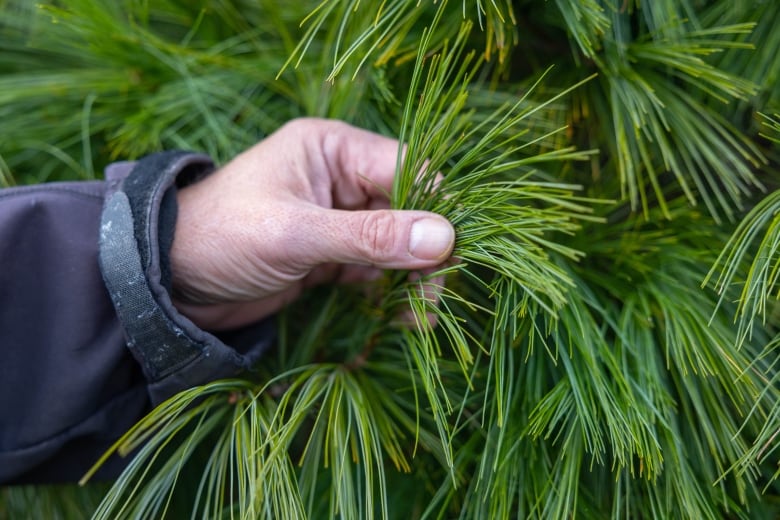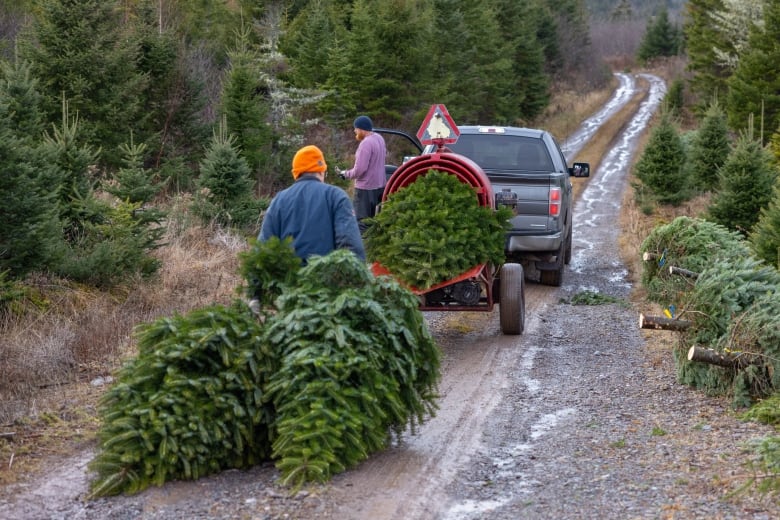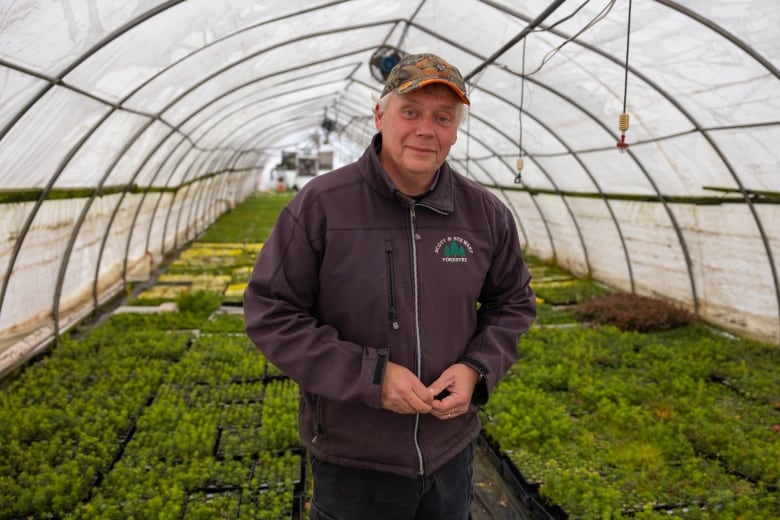Christmas tree growers in Nova Scotia say they’re already experiencing the impacts of climate change on their industry, and they’re preparing for even more.
Balsam fir, the predominant species grown for Christmas trees in the province, require a series of frosts in the autumn to harden off and retain their needles long after they’re cut.
But those fall frosts are becoming scarcer.
“We’re lucky in here — we have a cold climate. However, we’re seeing changes. Our falls are getting warmer,” said Chrissy Trenholme, the assistant manager of the Northeastern Christmas Tree Association.
When Trenholme spoke with the CBC two days before Halloween, growers were about to start cutting trees to ship to U.S. markets. But with only about seven frosts in the Giants Lake area of Guysborough County where she is located, she was concerned about trees drying out before they arrived at their destinations.

“If someone purchases a tree fresh off a U-pick, they’re pretty safe. But for us shipping out trees … after a month, they will start dropping their needles.”
Growers are also concerned about how the changing climate could affect pests and diseases. Aphids, tussock moths, gypsy moths and gall midge can damage trees and may be affected by warming temperatures, Trenholme said.
“We’re seeing new threats, new diseases coming in that don’t die off in the winter because we’re not having those cold climates.”
Big business
The Christmas tree industry in Nova Scotia is big business. Last year, growers exported nearly 420,000 trees, with a value of over $9.4 million. About 89 per cent of those were sent to the U.S., with Panama a distant second at 8.4 per cent.
According to 2017 statistics, Nova Scotia was the second-biggest exporter of Christmas trees in Canada, behind Quebec.

The provincial Agriculture Department is hoping to help protect the industry from the effects of climate change. Staff have surveyed stakeholders to understand the impacts of climate change, and will be working with growers to develop adaptation strategies for the future.
But some farmers are already making changes.
How farmers are adapting
Balsam fir makes up about 98 per cent of the trees at Shaun Scott’s Christmas tree farm near Antigonish, N.S., but he is also growing Douglas fir, grand fir, noble fir, white pine, Scots pine, Fraser fir and Korean fir.
“If the temperatures get extreme and our balsam fir, which is a boreal species and kind of a cold, northern-type species, if that starts to struggle, we would like to have another substitute to grow.”

It takes about 10 years to grow a mature Christmas tree, so Scott is preparing now for what’s to come.
“We know it’s coming, we just don’t know how fast it’s coming,” he said. “I think in any business … you want to be ahead of the problems rather than chasing the problems.”
He is also growing SMART trees, a tree developed in Atlantic Canada that is sturdier, more resistant to pests and keeps its needles for up to three months — qualities that could help them weather climate change.

Scott said tree farmers will need to be increasingly diligent to check for pests and diseases as temperatures warm, and to deal with problems as soon as they arise.
Growers may also need to give more consideration to the roads on their farms, digging bigger ditches or installing bigger culverts to prepare for more severe rainstorms, Scott said. An intense rain and windstorm in late November that caused road washouts and bridge collapses in Antigonish and Cape Breton forced Scott to rebuild three roads he uses to access his tree lots.
How climate change will affect balsams
Anthony Taylor, an associate professor of forest management at the University of New Brunswick, has researched the impact of increased temperatures and drought on balsam fir as well as other species that make up the natural forest in Nova Scotia.
Taylor said while he does not expect climate change to seriously affect the growth of balsam fir over the next 20 to 30 years, if temperatures continue to rise under a “business as usual” climate change scenario, toward the end of this century it will become harder for seedlings to survive, and the remaining trees will grow less vigorously.

However, Taylor said Christmas tree farms would likely see less impact in the short term than balsam fir in natural forests, since competing trees such as maple and oak are weeded out in commercial operations.
Balsam firs are grown commercially with success as far south as Connecticut and southern New York State, which have temperatures two to three degrees warmer than those in the Maritimes, Taylor said. However, when balsam firs are grown farther south, such as in Virginia, they become susceptible to fungal infections.













Leave a comment